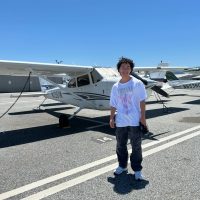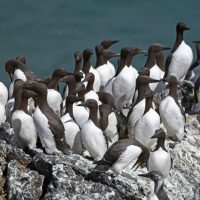Filter Results
A return to his roots: SAFS undergrad conducts research in Hawai’i during HPP internship
Dash Dicksion, a SAFS undergrad, got to return to his home island of Oahu during his NOAA HPP internship in the summer of 2024, working with the Ecosystem Sciences Division of NOAA’s Pacific Islands Fisheries Science Center. He spent 30 days at sea, plus time in the lab, focused on the biocultural and ecological aspects of fish larvae across Hawai’i Pae ‘Aina (the Hawaiian archipelago).
Read moreBeyond despair: How can ecosystem restoration enhance human wellbeing?
Ecosystem restoration has historically had a very ecological focus. However, while teaching a special interdisciplinary class during her time at Duke University, SAFS Assistant Professor, Carter Smith, took a slightly different view: how can ecosystem restoration be used to directly improve human wellbeing?
Read moreHurricane hunting with NOAA: Hollings Scholarship internship set for 2025
When awarded the NOAA Hollings Scholarship, students spend a summer working on a topic related to the wide-ranging scientific expertise of NOAA, from fisheries to the atmosphere. For SAFS undergrad, Michael Han, he’ll be joining the NOAA Hurricane Hunters to take data from notable past missions and present them in a visualized format on NOAA’s Science on a Sphere display.
Read moreSurveys show full scale of massive die-off of common murres following the ‘warm blob’ in the Pacific Ocean
A University of Washington citizen science program — which trains coastal residents to search local beaches and document dead birds — has contributed to a new study, led by federal scientists, documenting the devastating effect of warming waters on common murres in Alaska.
Read moreEvolution and elongation in deep dwelling anglerfishes
Working with specimens from the Burke Museum and NOAA, Elizabeth Miller, a former postdoc at SAFS, was captivated by the great diversity of shapes of anglers, which was at odds with how the species is often depicted in popular culture (think Finding Nemo). Elizabeth set out to build a family tree of anglerfishes and delve into the evolution of new shapes, such as body elongation.
Read moreFrom tropics to temperate: The shifting breeding ranges of seabirds amid climate change
Across the globe, species are shifting their ranges in response to environmental changes driven by climate change. However, seabirds face distinct challenges in adapting to these shifts. Amelia DuVall, PhD candidate at SAFS and member of the Washington Cooperative Fish and Wildlife Research Unit, recently published a paper reporting on the breeding range expansion of two pantropical seabird species—the Brown Booby and the Blue-footed Booby.
Read moreWorking on Alaska pinniped projects during the SAFS-MML internship
During this year’s SAFS-NOAA Marine Mammal Laboratory internship program, two UW students split their time working on two Alaska pinniped projects: remote camera imagery and food habits.
Read moreWhere are we now? Reflections on Tribal Fisheries and Co-Management 50 years after the Boldt Decision
50 years on from the Boldt Decision, SAFS held a one-day Bevan Symposium reflecting on Tribal fisheries, their co-management since this landmark decision, and what the next 50 years will look like for Washington fisheries. Centering on Tribal voices, the symposium heard from Tribal leaders, elders, scientists, artists and lawyers, through a series of panels and Q&A discussions.
Read moreCongratulations to Lisa Cantore, recipient of the 2024 Outstanding Staff Award
Congratulations to Lisa Cantore, who was chosen as the recipient of the 2024 Outstanding Staff Award. In her role as Assistant Director, Research Administration, Lisa was described as “untiring and indefatigable, working to get proposals submitted.”
Read moreOne or many? Exploring the population groups of the largest animal on Earth
Hunted nearly to extinction during 20th century whaling, the world’s largest animal, the Antarctic blue whale, went from a population size of roughly 200,000 to little more than 300. The most recent abundance estimate in 2004 put Antarctic blue whales at less than 1% of their pre-whaling levels. But is this population recovering? Is there just one population of Antarctic blue whales, or multiple? Why do these questions matter for conservation? PhD student, Zoe Rand, is tackling these questions in a new study.
Read more








